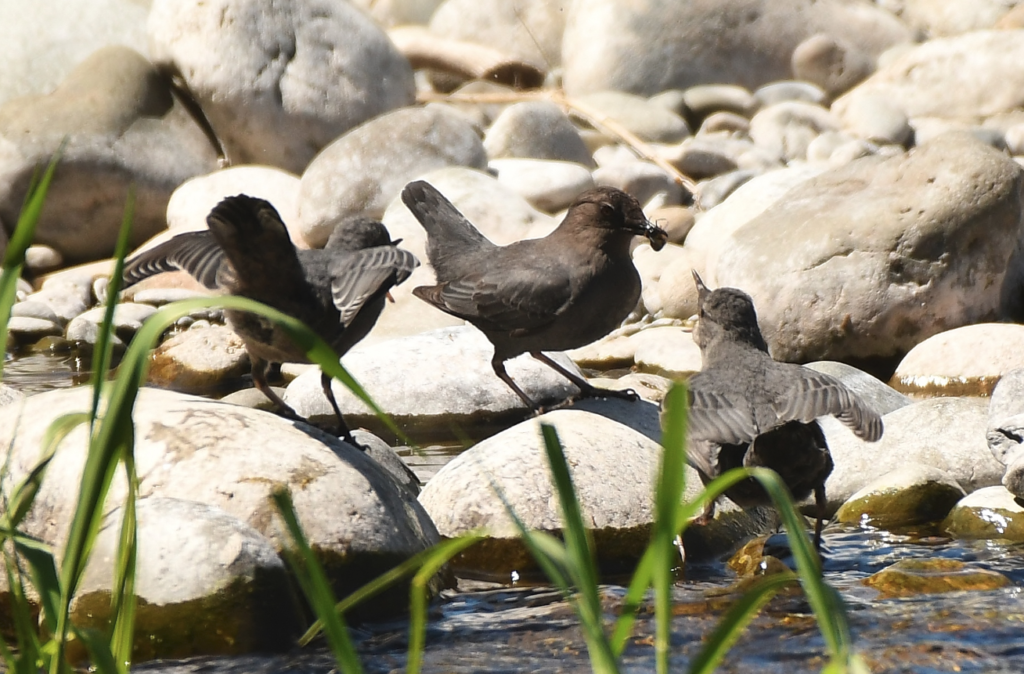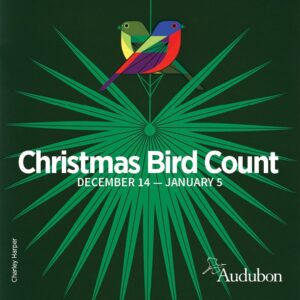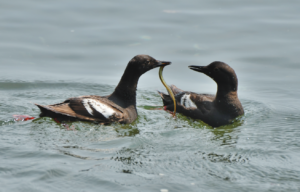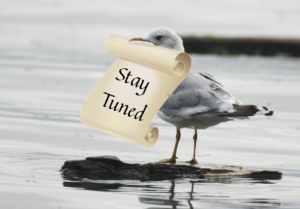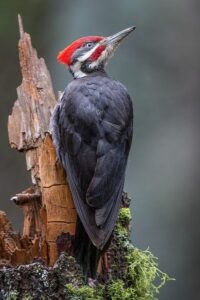Armchair Birding: The American Dipper, or Water Ouzel
~ Anne Kilgannon
While it’s true that I depend on reading about birds as much as observing them in the field, those habits are often twined: seeing a new bird will send me to my bookshelf for reference and, in turn, reading sharpens my search for birds outside. Adding the Merlin app has opened a whole other dimension to my efforts to discover birds in my world. Recently I was delighted to learn that warblers, kinglets, wrens, and goldfinches were having a party far above my head in some Douglas firs. I could hear thin-sounding whistles, chirps and calls but only the vivid flash of yellow revealed the finches. Just to know that the others were there was enough for me. Actually seeing a bird and observing its way of life is sweet icing on my cake.
I was given that deep pleasure last week. My friend Kathryn has been reporting sightings of Dippers to me for (can it be?) years and I have tried to follow up to see one for myself but either failed to find one or didn’t recognize one if I was seeing it. After all, they are members of that ubiquitous tribe of LBBs! But that’s no excuse; their behavior clearly sets them apart. You can’t confuse them with anything else but they do require patience, luck and the right setting: a fast running stream with handy rocks for perching. Tumwater Falls is the place to go. Kathryn took me in hand.
We scoured the various rocks and the swirling water in likely spots all along the river shore as we progressed down the trail. No….no….should be, could be….not here or there. Finally, we came to the end of the trail, past the foaming falls where the water spreads out a bit and begins to slow down. A family of Canada geese floated by with a line of goslings in tow. The exuberant spray from the falls was behind us but the roar still filled our ears. Though disappointment loomed, we still searched.
We gazed at the water, locating protruding perch rocks….and there was a dark flash. Movement. A bird there and then not there. And then, a little further, it popped up again! A bird no bigger than a robin, maybe slightly smaller, dark with no discernable markings, but a very characteristic bobbing at the knees and submerging itself under water to quickly probe for insect prey. It plunged in and out of the river, bobbing and picking its way quite comfortably under water. And then it suddenly zipped past us, flying in a beeline up the river and disappearing—so it looked—right into the falls. It repeated this several times, as we watched, going into the river for a dip and then shooting into the mist of the water plunging down the rock face. We followed to see where it might be headed. It was worth the misty shower to see the bird land on a ledge jutting from the falls where two lighter colored baby birds waited. The feeding took only seconds and then the parent was off again for more bugs.
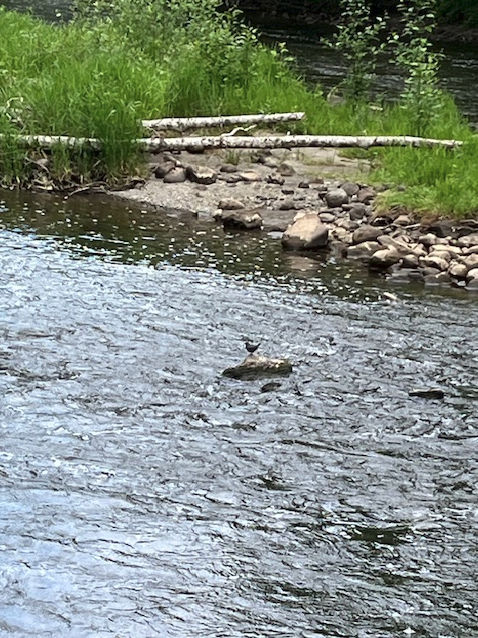
We were jubilant! At some point we realized there were two parent birds as well as two baby birds. Our persistence and patience were rewarded. Once you’ve seen a Dipper, unlike so many other LBBs, you know what it is, and no second-guessing is required. Still, I wanted to know more. I pulled my Sibley books off the shelf and another great resource, The Birder’s Handbook, by Ehrlich, Dobkin and Wheye. Their commentary is cryptic but fascinating. They note that the Dipper can “fly” under water as deeply as twenty feet! They have special adaptations, such as “much larger oil glands” to keep their feathers waterproof and “scales that close nostrils when underwater.” They are also helped by plumage that “is very soft, dense and difficult to saturate” and possess “a white nictitating membrane (third eyelid) that can be drawn across the eye to help keep it clear of dirt suspended in the water.” In their discussion of bird species that swim underwater, the authors single out Dippers as ones that simply walk instead of diving, swimming or paddling, although they employ “powerful beats of their wings” to propel themselves in fast-moving water. Sometimes just their heads are submerged, searching for prey. “The young can climb, dive and swim on departing the nest,” ready for everything their river environment presents. That nest is often a ball of moss that befits such a drippy-wet territory.
My Sibley Guide to Birds shows the Dipper’s relative size beside some of their relatives and gives you a chance to see their slate-gray coloring and finer features in rare stand-still poses: their stubby upraised tails, strong-looking long legs, and probing pointed beak. Sibley calls them “unique, the only songbird that regularly swims.” It has no close relatives in North America but there are different versions on other continents according to the Sibley Guide to Bird Life and Behavior. That guide also speculates that the rapid dipping motion helps them see underwater from different angles while also communicating strength in a noisy environment. Sibley adds that: “the oxygen capacity of the blood is much higher than that of nonaquatic songbirds, allowing them to remain submerged for up to 30 seconds while foraging.” And he explains this impressive adaptation: “Their vision is facilitated by the iris sphincter muscles, which are more developed in dippers than in most birds, allowing the curvature of the lens to adapt to seeing both above and below the water.” There is more information but that was a lot of food for thought for one day. The intricacies of adaptation and evolution fill me with awe.
There was only one more piece of information I craved. The rushing waters of the waterfall and river had filled the air with their own music, but I wanted to know what the call of the Dipper was in the unlikely event I should ever hear one away from the water tumult. I turned to the Cornell Lab website for that and was rewarded with a lovely close-up photograph of the bird with a long recording of its intriguing song. Look here: https://www.allaboutbirds.org/guide/American_dipper
Dippers retain their mystery as beings from a different world and way of life, but learning something about them only adds to my sense of wonder as I may watch them in their river environment next time I’m lucky enough to see them. Thank you, Kathryn!
Photo credits: American Dipper Parent Feeding its Fledglings, by Rachel Hudson, and American Dipper in its Natural Habitat, by Anne Kilgannon.


